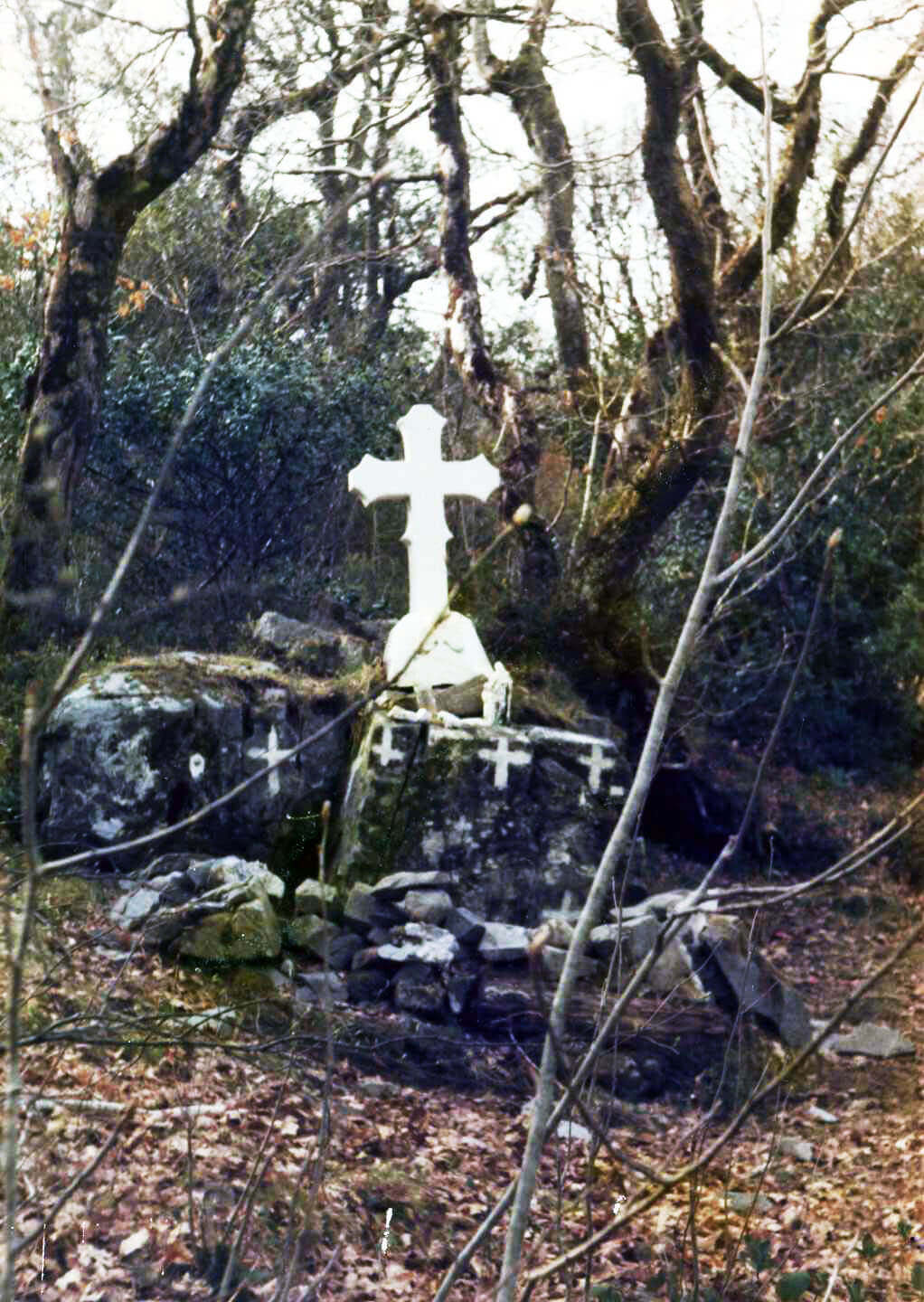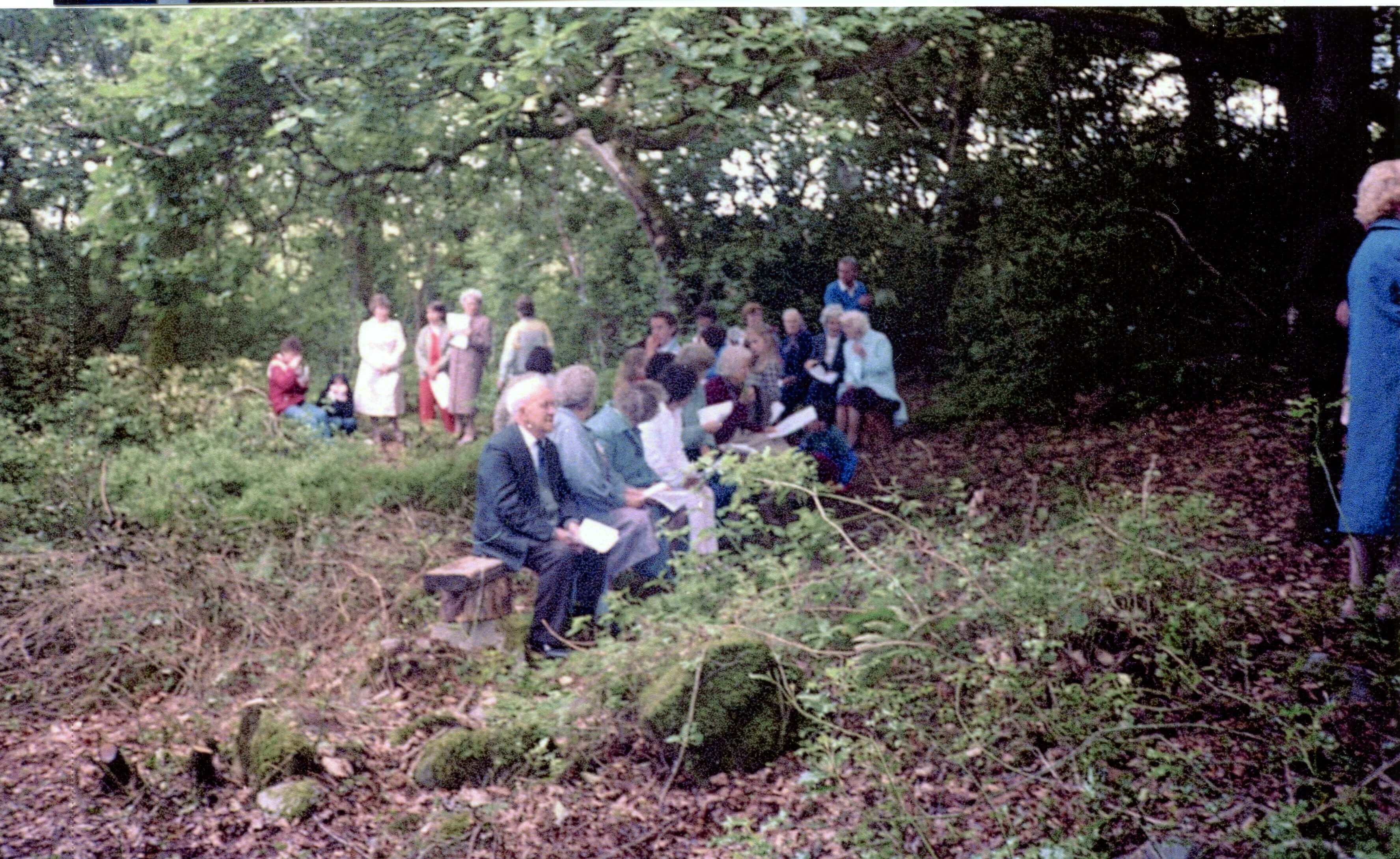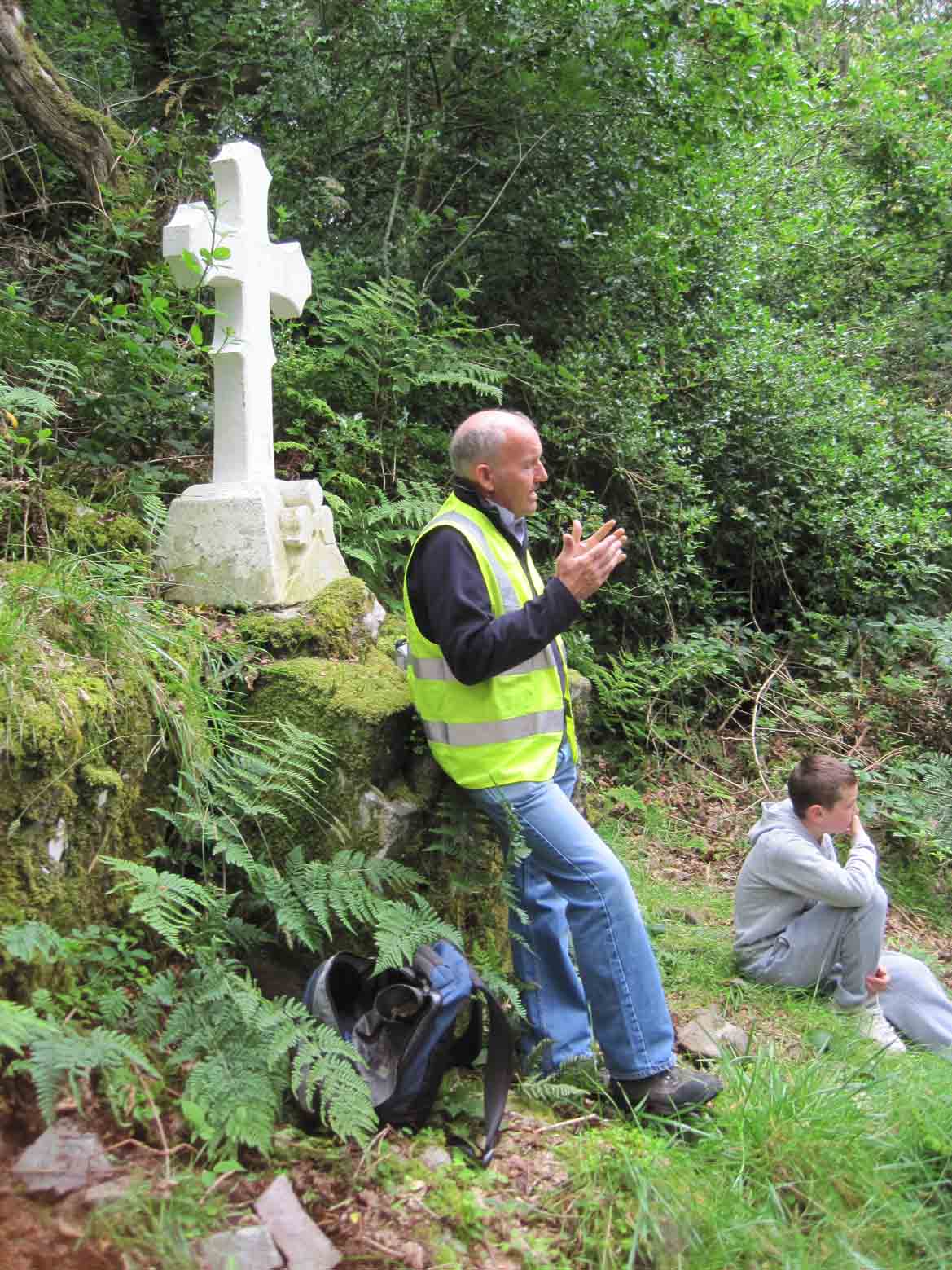The Donagh Mass Rock, located in the old oak woods near Carrick, Carndonagh, was a site of secret worship for mass-goers during the era of the Penal Laws (introduced in 1695). Priests risked the punishment of death if discovered saying Mass during this time, and the congregation also risked violent retribution. Because of this, the location of Mass Rocks tended to be remote, hidden and isolated, to ensure the safety of all. Often the site chosen was on the border between two parishes, which were owned by two separate landlords. This way, neither landlord would know which parish deserved to be punished if the mass was discovered. Mass times were not publically shared, so as to avoid detection, and word of mouth was used to inform parishioners of the date and time of upcoming services. The Donagh Mass Rock remains in its original position today. A mass was held there in the 1980s, but these days it is more a site of historical interest than pilgrimage.
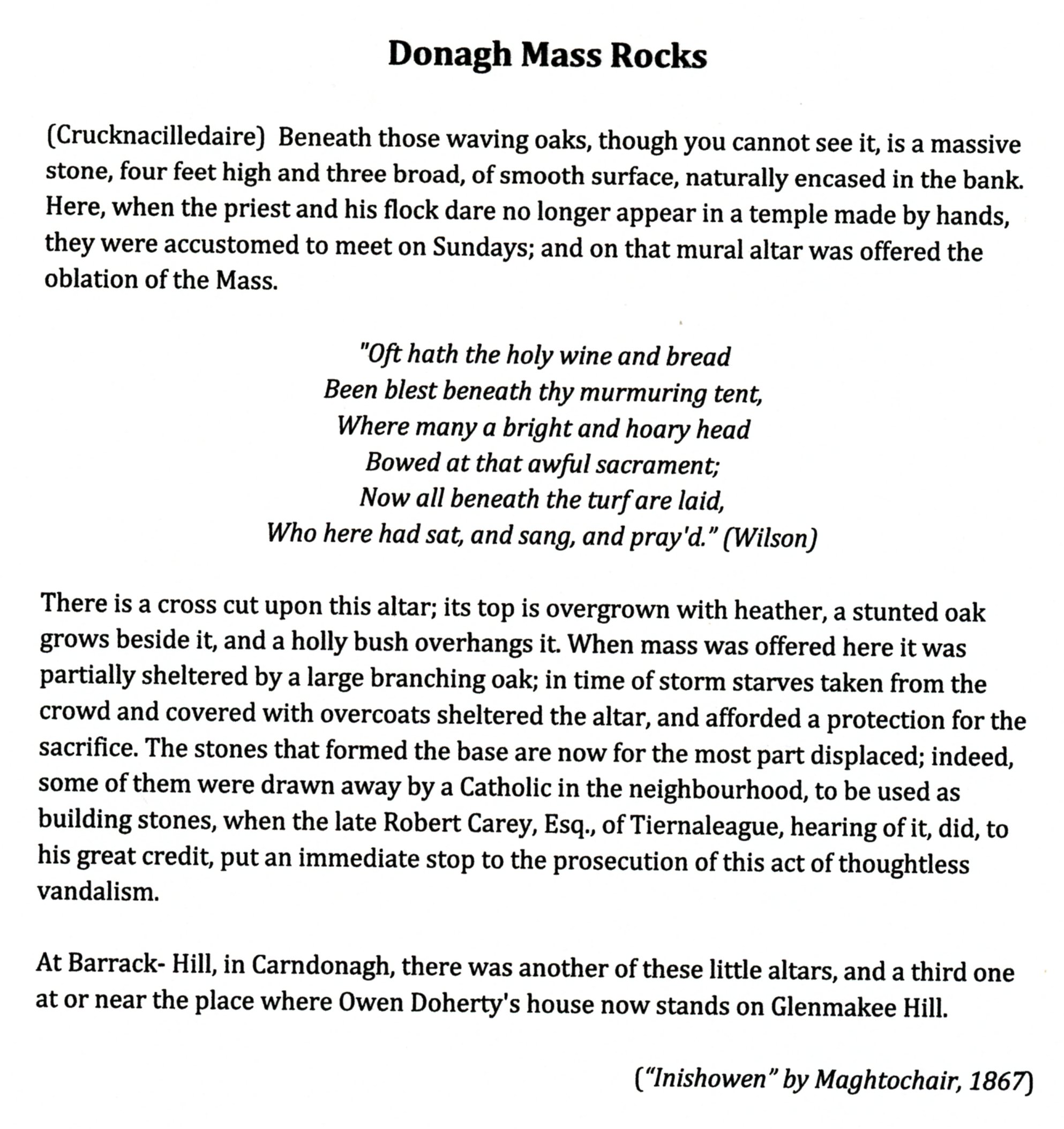
“Oft hath the holy wine and bread
Been blest beneath thy murmuring tent,
Where many a bright and hoary head
Bowed at that awful sacrament;
Now all beneath the turf are laid,
Who here had sat, and sang, and pray’d” (Wilson)
There is a cross cut upon this altar; its top is overgrown with heather, a stunted oak grows beside it, and a holly busy overhangs it. When mass was offered here it was partially sheltered by a large branching oak; in time of storm starves taken from the crowd and covered with overcoats sheltered the altar, and afforded a protection for the sacrifice. The stones that formed the base are now for the most part displaced; indeed, some of them were drawn away by a Cathloic in the neighbourhood, to be used as building stones, when the late Robert Carey, Esq., of Tiernaleague, hearing of it, did, to his great credit, put an immediate stop to the prosecution of this act of thoughtless vandalism.
At Barrack-Hill, in Carndonagh, there was another of these little altars, and a third one at or near the place where Owen Doherty’s house now stands on Glenmakee Hill.

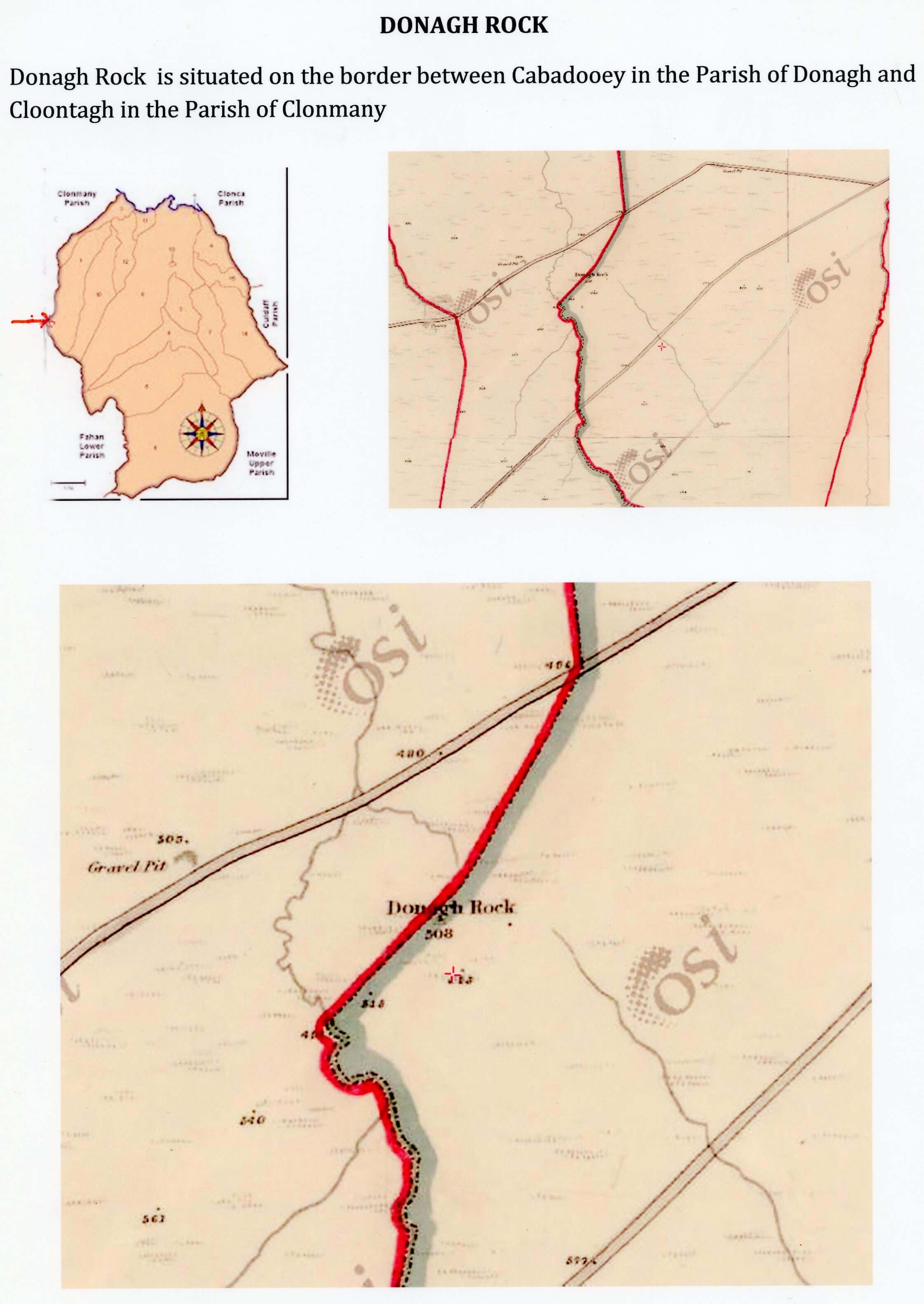

“Though robbed of churches they found places hidden and remote where they continued to worship in the lonely glen and mountainside. Nor did their loyalty falter in the days of a freeer existence. Once released from their thraldom, they bent their energies to the task of restoring their Catholic heritage; and today the land is studded with worthy edifices, monuments of faith and learning. The visitor to our shores who has even a slight acquaintance with our story over the past few centuries, cannot fail to be impressed by such a remarkable renaissance, and not a few have confessed to the edification which they felt in witnessing the scene which presents itself on a Sunday morning in the Irish countryside, when old and young wend their way by every road and path to unite in the Holy Sacrifice of the Mass animated by the same purpose and rejoicing in the same holy faith.”

